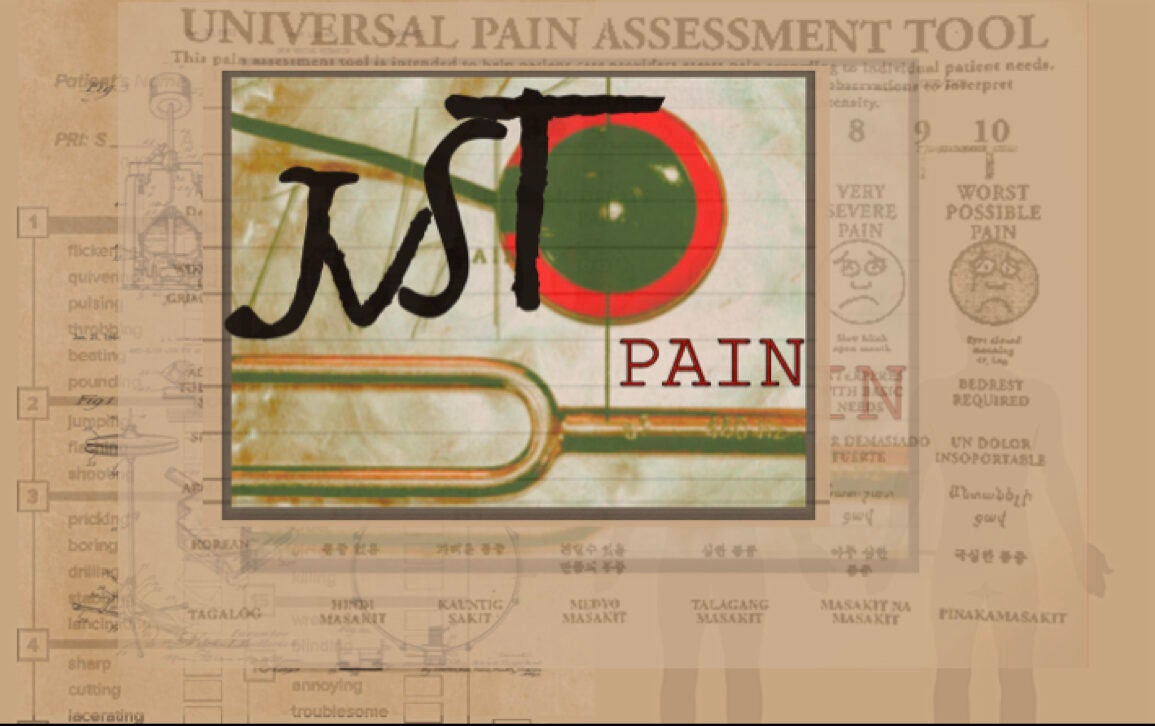A concert featuring electronics, live instruments, and the audience as musicians.
….contesting efficiency-driven economies that operationalize the categorical individuation of pain for profit and in appeals to justice, JUST PAIN remixes acute and chronic intensities in a vibrationally amplified process community , creating an interactive feedback experience that challenges the ‘treatment’ of pain as a promise of equity (aka analgesic error as remedial logic.)….
The performance takes an interactive process score for instruments and live electronics that uses audio feedback and other interactive elements as sonic metaphors and experiential augmentations for the various modes of pain iterability and constructions of pain mitigation, management, and medicalization (from pathologization to normalization to instrumentation).
The project is a collaboration between musicologist/composer/punk-noise musician Jessica Schwartz (UCLA), saxophonist Jan Baker (UCLA), composer/sound artist Adam Mirza (Emory), punk all-star musician and curator, Tequila Mockingbird (Punk Museum), and artistic director, Jerry Pergolesi (Intersection Music & Arts) . The project extends and expands Schwartz’s critical research in the medical humanities (e.g. radiogenic illness archived in Marshallese vocal music) and questions around biopolitics, disability, and punk music, which Schwartz explores in the Punkast series, on which Mockingbird is often featured as a guest producer and co-host. Her punk collection is archived at UCLA LSC Punk Archives, which has collaborated on this performance by displaying reproductions of collection materials. JUST PAIN weaves the DIY with new music, highlighting Baker’s experience in contemporary chamber and experimental music, and Mirza’s sound installations involving feedback and speaker-objects. Pergolesi is central to such intersections of expressivity manifest through intersubjective positioning in live music.
In addition to the five main performers, this event is INTERACTIVE, and the audience will be encouraged to explore vibrational intensities and ways in which we can collectively incorporate the feedback of our live electronic ensemble in the creation of a dynamic system
